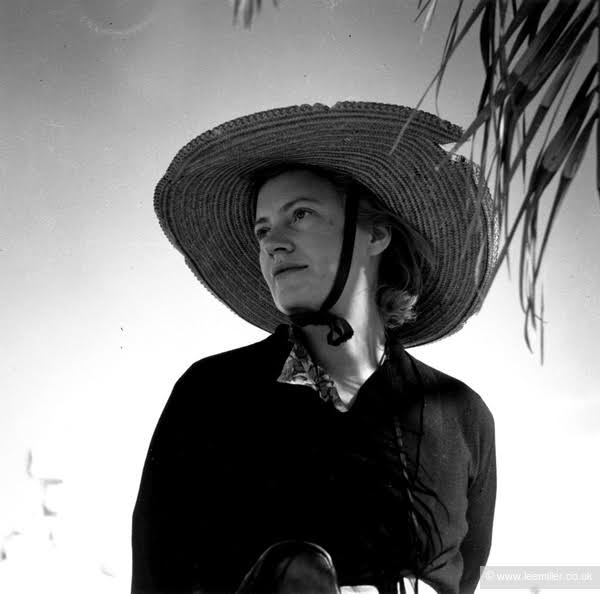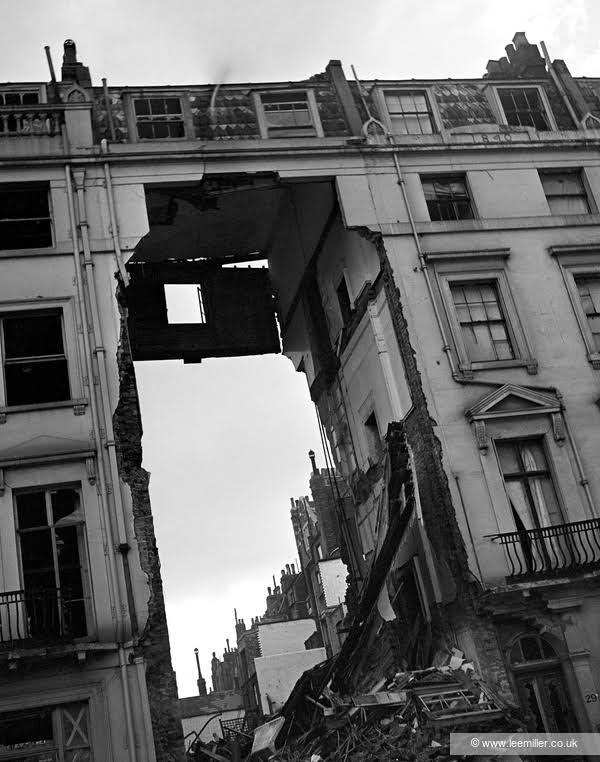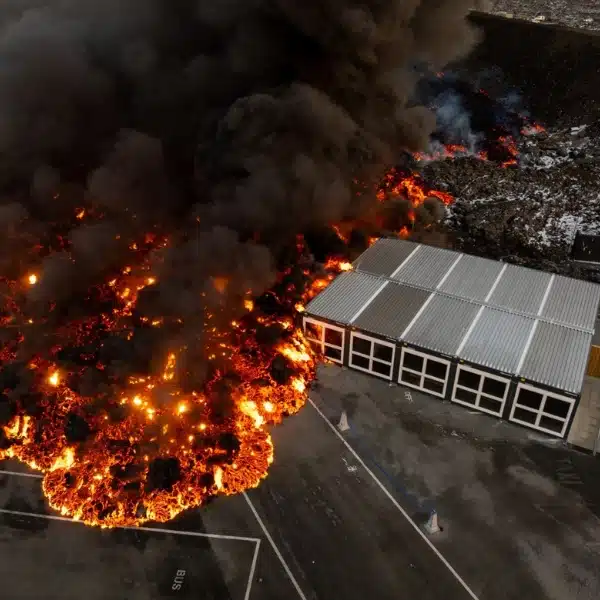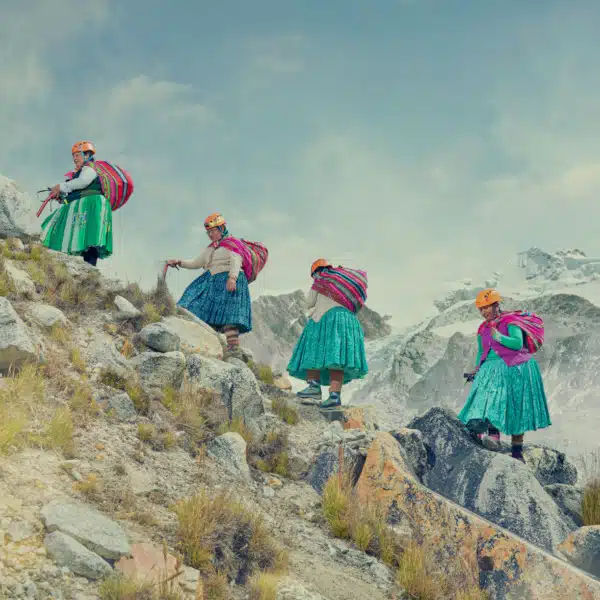
Lee Miller, Egypt 1939 by Roland Penrose (Photo: Roland Penrose © Lee Miller Archives, England 2020. All rights reserved. leemiller.co.uk)
In the 1920s, modernism met its match when Surrealism entered the scene. With an emphasis on experimentation, Surrealism appealed to modern art's most avant-garde artists, with Salvador Dalí and André Breton at the forefront. While most of these pioneering figures would continue pushing the boundaries of the movement for the duration of their careers, fashion model-turned-photographer Lee Miller made history when she leveraged her earlier experiences into a new professional pursuit: war documentation.
As a war correspondent, Miller saw—and expertly shot—the realities of World War II, from the horrors of Nazi concentration camps to the Liberation of Paris. While one may wonder how an American woman with a background in experimental art found herself on the front lines in Europe, Miller's journey was marked by twists and turns, culminating in a one-of-a-kind career fit for a surrealist.
Launch into Fashion
On April 23, 1907, Elizabeth “Lee” Miller was born in Poughkeepsie, New York. With an amateur photographer for a father, Miller was exposed to creativity early on, prompting her to pursue lighting, costume, and design in Paris at 18 years old and study fine art in Manhattan just one year later.
While Miller had seemingly settled in New York City to hone her craft, her plans changed when she ran into a new opportunity—literally. According to Phillip Prodger in Man Ray | Lee Miller: Partners in Surrealism, the hustle and bustle of city life unexpectedly made Miller into a model, as she was “famously discovered when Condé Nast rescued her from being run over in the street.”
A Vogue covergirl before the age of 20, Miller had swiftly rerouted her artistic aspirations. After two years of serving as the city's most sought-after model, however, her fashion career came to a grinding halt when her famous face was used to advertise feminine hygiene products. Following a sexist scandal that saw Miller ostracized, she left the fashion world and again shifted gears—this time focusing on photography.
Surrealist Photography
In 1929, Miller returned to art, continuing her education as a student at the Art Students League of New York. While studying Renaissance art—a genre the 22-year-old had quickly grown tired of—in Italy, she made the momentous decision to pursue a more modern art form: photography. Taking advantage of her close proximity to Paris—the hub of modernism and the home of Surrealists—she boarded a train to the capital and made her way to the studio of Man Ray, who she hoped would agree to mentor her.
Unfortunately, no one answered the door. Defeated, Miller made her way to the Bateau Ivre, a nearby bar—and the site of another life-changing encounter. In a 1975 interview, she explains that she was “drowning [her] sorrows” when Man Ray appeared at the local haunt. “He came across and said hello. And then the patron said, ‘This is Man Ray.' Man said, ‘I don't have students.' He said he was leaving for Biarritz the next day, and I said, ‘So am I.'”
The ensuing relationship between Miller and Man Ray was equal parts professional and romantic. They worked together on photography projects, with Miller often modeling for the avant-garde compositions that they planned together. While her starring role in these photos has led to a legacy largely focused on her role as a “muse,” she pulled her weight in their partnership.
In fact, many of the commercial shots attributed to Man Ray (from 1920 through 1940, he produced high-fashion photographs for Vanity Fair, French Vogue, and Harper's Bazaar) were actually Miller's work, and the use of solarisation—a tonal technique central to Man Ray's oeuvre—was reportedly her idea. Of course, as her teacher, Man Ray helped Miller improve her technique and perfect her processes. “Although Ray some seventeen years Miller's senior,” Prodger says, “during the critical years of their partnership, their influence was mutual.”
By 1930, Miller had set up a studio in Paris, where she crafted her own Surrealist portfolio characterized by an interest in the absurdity of the real world. Two years later, however, she and Man Ray broke up. Following the end of their relationship, Miller moved back to New York City. Man Ray, on the other hand, remained in Paris, where he mourned the relationship through symbolic sculptures and poignant paintings for years to come.
Back in New York, Miller found her footing. While she quickly established a successful commercial photography studio and had her work featured in exhibitions—including her first solo show—she didn't stay in the Big Apple long. In 1934, she relocated to Egypt, where she married businessman and engineer Aziz Eloui Bey. By 1937, however, she returned to Paris, where she met Roland Penrose, the man she would marry a decade later.

“Bridge of Sighs,” Lowndes Street, London, England 1940 by Lee Miller (Photo: © Lee Miller Archives, England 2020. All rights reserved. leemiller.co.uk)
War Correspondence
By the start of World War II, Miller was living with Penrose in London. “Defying orders from the US Embassy to return to America,” the artist's estate explains, “she took a job as a freelance photographer on Vogue,” becoming the magazine's official war correspondent.
Her work as a war photographer began with the Blitz, and, for years to follow—with an accreditation from the U.S. Army—she captured key events like the first use of Napalm and the Battle of Alsace. She also documented the atrocities of the Holocaust, including a graphic glimpse into Bergen-Belsen, the notorious Nazi concentration camp, as a means of revealing the realities of war to the outside world. “It would’ve been incredibly easy for her to disappear to America and sit the war out.” Penrose explained. “But she didn’t. I think she wanted to stay and try and do something. And nobody was going to give her a gun or an airplane, or something useful like that—so she used her camera.”
Her most well-known work as a war correspondent, however, came in 1945. Hours after Adolf Hitler's suicide, she and Life correspondent David E. Scherman entered his apartment and held a harrowing photoshoot in his bathtub. “I had his address in my pocket for years,” she nonchalantly explained.
Life After the War
Following the war, Miller returned to England. Unfortunately, like countless others on the front lines during World War II, she was diagnosed with clinical depression and suffered from post traumatic stress disorder—both of which likely contributed to her decision to abandon photography for a career in gourmet cooking.
In 1949, she and Penrose purchased Farley Farmhouse, a home in East Sussex, England. Today, this site serves as a museum dedicated to its important inhabitants, their work, and the modernist collection they amassed over the course of 35 years. Featuring pieces by Pablo Picasso, Joan Miró, and even Man Ray, these holdings are sure to impress. However, it is Miller's legacy that makes this farmhouse a particularly special site for fans of fashion, fine art, and photojournalism alike. In fact, Miller's home in Sussex is normally open to the public.
Lee Miller Archives: Website | Facebook | Instagram
My Modern Met granted permission to feature photos by Lee Miller Archives.
Related Articles:
5 Powerful Paintings by the Under-Appreciated Female Artist Artemisia Gentileschi
How Berthe Morisot Broke Barriers to Become the First Female Impressionist
How Female Painter Mary Cassatt Became an Important Impressionist Figure






















































































